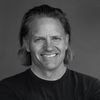
Not long ago I took a leisurely bike ride with a group that included a fanatical cyclist. He knew everything about bikes: wind resistance, optimal posture, component weight. A dyed-in-the-wool bike nerd.
At one point during our ride, he announced to the group that he frequently did sixty-mile training rides. This was up from twenty-five or thirty miles at a time a year or two before. His rides would take hours. That very day, in fact, when the rest of us in the cycling group were planning on calling it quits, he planned on cycling another fifteen miles home.
I have to give the man points for dedication, but despite all his efforts, he was frustrated because he had a sizeable gut; he admitted that no matter how far he rode, he couldn’t seem to lose it.
Moments before, he had told us he had dropped two thousand bucks on a new gear system to save himself just under a half pound of bike weight. He said it made his hill climbs easier.
I felt bad for the guy, but I wasn’t altogether surprised about his weight problem, either. Genetics plays a role in the ease or difficulty of burning off fat. But choosing long, slow cycling as your primary form of exercise activity doesn’t help.
When you ride a bike, after all, your weight is supported entirely by a metal frame. Your body absorbs no impact. Your legs work hard, granted, but in a very limited, extremely repetitive range of motion in a movement that isn’t particularly organic. And because your legs never actually support your weight or absorb any force from the ground, your bones aren’t stimulated to grow and thicken, and your muscles don’t undergo eccentric contraction—that is, they never lengthen under tension, which is a key factor in muscle growth.
And fast, hard muscle contraction, not long, slow cardio, is what drives fat loss. The more muscle you have, the bigger and hotter your fat-burning engine. The less you have, the more likely you’ll wind up “skinny-fat”: paunchy with no noticeable muscle development, like the unfortunate cyclist I went out with that day.
Still another problem: cycling puts you in the dreaded sitting position—something we all do far too much of anyway. It also seems to inspire in its participants an over- whelming urge to make repeated pit stops at Starbucks for thousand-calorie Frappuccinos and muffins, figuring their easy cruise through town will burn it all off.
This is all on top of erectile issues and prostate problems, which can result from too much cycling on the wrong kind of seat - and which can also cause your PSA levels to rise.
Look, if you adore cycling, do it—in moderation. Personally, I love mountain biking, which is typically more intense than road biking, and I fully approve of cycle commuting, as long as you’re able to stay safe and avoid busy streets (where I live, new “ghost bikes”—white painted bike frames chained to a post near the site of a fatal bike crash—pop up every few months). A long ride on the weekend or an outing with your son or daughter as part of an “active rest” day can be a lot of fun: you’ll be out in the fresh air, after all, easily moving along at a speed far faster than you can comfortably run. And high-intensity work on a bike—fast, hard hill climbs and sprints in a high gear—can be great for you.
But unless you’re seriously out of shape, don’t expect long, leisurely rides to build any muscle or put much of a dent in your fat stores. Don’t ride in lieu of strength training, mobility work, foam rolling, or a high intensity (HIIT) workout. And don’t ride for exceptional fitness. Ride for enjoyment, relaxation, and social connection—all of which are invaluable.
